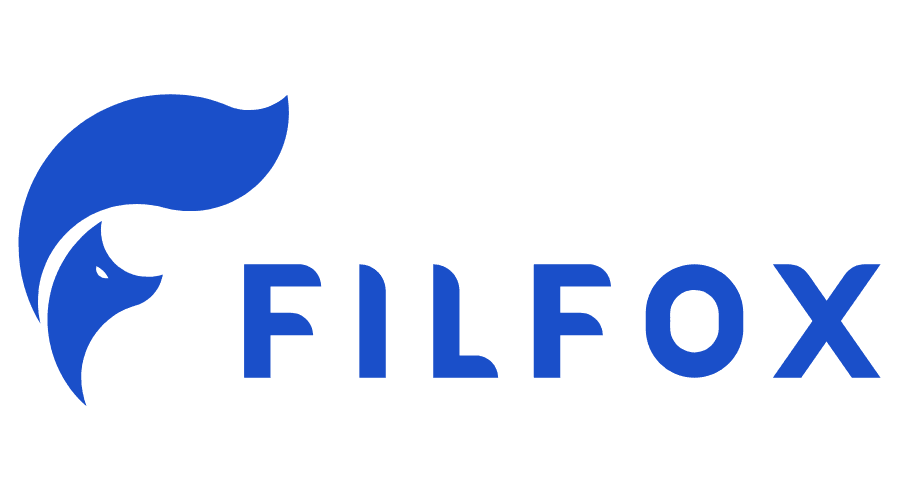
Introduction to Filecoin (FIL) Tokens
Filecoin (FIL) is a decentralized, open-source blockchain designed for decentralized storage solutions, enabling users to rent out unused storage space and retrieve data efficiently. As a proof-of-replication (PoRep) and proof-of-spacetime (PoSt) blockchain, Filecoin facilitates secure and efficient file storage while ensuring data integrity without relying on centralized entities.
Managing FIL tokens effectively requires a compatible wallet, whether it’s a hardware wallet, mobile wallet, desktop wallet, or web-based wallet. This guide explores different wallet options, explains how to add and transfer FIL, and outlines crucial security practices to protect your assets.
Choosing the right wallet is essential for seamless transactions, staking, and interacting with Filecoin-based applications. Hardware wallets offer the highest level of security by keeping private keys offline, while software wallets like Trust Wallet, MathWallet, and Ledger Live provide a balance between accessibility and security, making it easy to manage your tokens. Many of these wallets also support decentralized finance (DeFi) integrations, enabling users to swap FIL, participate in decentralized storage markets, or engage with smart contract functionalities.
Additionally, safeguarding private keys, recognizing phishing attempts, and enabling two-factor authentication (2FA) are critical measures to prevent unauthorized access to your assets. Whether you’re a trader, DeFi participant, or long-term investor, having a secure and reliable Filecoin-compatible wallet ensures efficient FIL management while reducing security risks.
Choosing the Right Wallet for Your FIL
Types of FIL Wallets
| Wallet Type | Supported Blockchains | Custom Token Support | Security Features | Ease of Use |
|---|---|---|---|---|
| Hardware Wallet | Multi-chain | Yes (via manufacturer software) | Cold Storage Security | Moderate |
| Desktop Wallet | Multi-chain | Yes (Manual Entry) | Private Key & Seed Phrase | Easy |
| Mobile Wallet | Multi-chain | Yes (Auto & Manual) | Biometric & Seed Phrase Encryption | Beginner-Friendly |
| Web Wallet | Multi-chain | Yes (Auto & Manual) | Password & 2FA Security | Very Easy |
Filecoin (FIL) is a decentralized blockchain that enables efficient and secure file storage while ensuring data integrity. Properly managing FIL tokens requires selecting the right wallet, whether it’s a hardware wallet, mobile wallet, desktop wallet, or web-based wallet.
This guide explores different wallet options, explains how to add and transfer FIL, and highlights essential security measures to protect your assets.
Best Wallets for Managing FIL
- Hardware Wallets (e.g., Ledger, Trezor): Best for long-term security and large holdings.
- Browser Extension Wallets (e.g., MetaMask, MathWallet, Trust Wallet): Ideal for interacting with decentralized applications (dApps) and quick transactions.
- Mobile Wallets (e.g., Trust Wallet, MathWallet, Exodus): Great for on-the-go access and multi-chain support.
- Web Wallets: Convenient but riskier, as private keys are stored online.
Security: Your Assets’ First Line of Defense
Security should be a top priority when choosing a wallet. A secure wallet protects against phishing attacks, unauthorized access, and potential exploits.
- Hardware wallets such as Ledger and Trezor offer the highest level of security by keeping private keys offline, making them resistant to hacking attempts.
- Software wallets like MetaMask, MathWallet, and Trust Wallet provide security features such as encrypted private keys and two-factor authentication (2FA) but remain connected to the internet, making them more vulnerable to cyber threats.
To Improve Wallet Security:
- Enable two-factor authentication (2FA) where possible.
- Use strong passwords and store your seed phrase securely offline.
- Avoid sharing your seed phrase or storing it digitally.
- Consider using a combination of a hardware wallet and a software wallet for additional protection.
Ease of Use: A Smooth User Experience
A wallet should be intuitive and user-friendly, especially for beginners.
- MetaMask is one of the most popular wallets for storing FIL, offering browser and mobile support, seamless dApp integration, and multi-chain compatibility.
- Trust Wallet provides an easy-to-navigate interface with built-in token swaps and DeFi access.
- MathWallet is another beginner-friendly option with self-custody and multi-chain support, allowing users to manage FIL efficiently.
For users who prefer mobile accessibility, wallets like Exodus and Trust Wallet offer well-designed mobile apps that provide secure and convenient access to FIL.
Beyond ease of use, an ideal wallet should also offer features like:
- FIL storage and management
- In-wallet token swaps
- Multi-chain support
Functionality: More Than Just Storage
A good wallet does more than just store FIL—it should offer features that enhance the overall user experience. Advanced users often require:
- DeFi integrations to trade FIL, provide liquidity, or interact with smart contracts.
- NFT storage and trading support for those involved in digital collectibles.
- Multi-chain compatibility for users managing assets across different networks.
For example:
- Trust Wallet and MetaMask support multi-chain compatibility, allowing users to store FIL across Filecoin, Ethereum, and other supported networks.
- MathWallet offers direct access to FIL swaps and staking features, making it a convenient choice for active users.
Considerations for Choosing a Wallet
Before selecting a FIL wallet, consider the following:
- Security Preferences: Hardware wallets (like Ledger Nano X) offer the highest security as they store private keys offline, while web wallets, though convenient, are more susceptible to phishing attacks and hacks.
- Ease of Use: Mobile and desktop wallets such as MathWallet and Trust Wallet provide user-friendly interfaces, making them ideal for beginners.
- Additional Features: Some wallets support in-wallet token swaps, DeFi integrations, and NFT management, enhancing their overall functionality beyond simple storage and transfers.
Popular Wallets for FIL
- Ledger Nano X: A top-tier hardware wallet offering secure cold storage for FIL.
- Trezor: Another highly secure hardware wallet option for long-term FIL storage.
- MetaMask: A popular browser extension wallet that supports Filecoin.
- Trust Wallet: A mobile-friendly wallet with support for multiple blockchains, including FIL.
- MathWallet: A versatile mobile and desktop wallet offering in-wallet swaps and staking.
- Filfox Wallet: A dedicated web-based Filecoin wallet for easy access.
1. MetaMask

MetaMask is a widely recognized non-custodial wallet that supports Filecoin (FIL) alongside other EVM-compatible networks, including Ethereum, BNB Chain, and Polygon. As a self-custody wallet, MetaMask ensures that users maintain full control over their private keys, enhancing security and decentralization.
With its intuitive browser extension and mobile app, MetaMask provides a seamless experience for sending, receiving, and managing FIL. Users can also interact with dApps, swap tokens, and manage smart contracts within the Filecoin ecosystem.
2. Trust Wallet

Trust Wallet is a secure and user-friendly mobile wallet that supports Filecoin (FIL) along with multiple blockchains. As a non-custodial wallet, it ensures that users retain full control over their private keys.
Trust Wallet offers seamless integration with FIL dApps and DeFi platforms, allowing users to swap tokens, stake assets, and interact with smart contracts. With biometric authentication, private key encryption, and in-wallet token swaps, Trust Wallet is an ideal choice for securely managing FIL on mobile devices.
3. Ledger Nano X

The Ledger Nano X is a top-tier hardware wallet that offers secure cold storage for Filecoin (FIL). By keeping private keys offline, Ledger Nano X eliminates exposure to online threats, such as hacking, phishing, and malware attacks.
Beyond security, Ledger Nano X seamlessly integrates with FIL-compatible wallets, allowing users to store, send, and manage FIL securely. With Bluetooth connectivity, mobile compatibility, and multi-asset support, it is an ideal choice for long-term storage of FIL and other cryptocurrencies.
4. Trezor
Trezor is another highly secure hardware wallet that supports Filecoin (FIL). It offers cold storage security, ensuring that private keys are never exposed to the internet, minimizing the risk of hacks.
Trezor’s intuitive interface allows users to store, send, and receive FIL while integrating with third-party wallets like MetaMask or MathWallet. With its open-source firmware and strong encryption features, Trezor is a trusted option for long-term FIL storage.
5. MathWallet
MathWallet is a versatile multi-platform wallet that supports Filecoin (FIL) on desktop, mobile, and web. As a non-custodial wallet, it provides users with complete control over their private keys.
A key feature of MathWallet is its built-in token swaps, allowing users to exchange FIL for other cryptocurrencies without leaving the wallet. Additionally, MathWallet supports staking, enabling users to earn rewards on select assets.
6. Filfox Wallet

Filfox Wallet is a dedicated Filecoin wallet designed for secure storage and easy access to FIL tokens. As a web-based wallet, it allows users to manage their FIL holdings efficiently.
Filfox Wallet is known for its user-friendly interface and seamless integration with the Filecoin ecosystem, making it a great option for users looking to interact with decentralized storage networks.
Final Thoughts
Choosing the right wallet depends on your needs:
- For maximum security: Ledger Nano X and Trezor offer the best cold storage solutions.
- For ease of use and DeFi access: MetaMask and Trust Wallet provide seamless dApp integration.
- For staking and built-in swaps: MathWallet is a strong choice.
- For dedicated Filecoin support: Filfox Wallet offers direct access to the Filecoin network.
By prioritizing security, usability, and functionality, users can safely manage their FIL holdings while taking advantage of the Filecoin ecosystem.
How to Add Filecoin (FIL) Tokens to Your Wallet
Once you have selected your wallet, the next step is to add Filecoin (FIL) to it. The process varies depending on whether you’re using a mobile/desktop wallet or a hardware wallet.
For Mobile & Desktop Wallets (MetaMask, Trust Wallet, MathWallet, Filfox Wallet, etc.)
- Download and Install the wallet app or software from the official website or app store.
- Create a New Wallet or Import an Existing One using your seed phrase.
- Ensure Your Balance is Visible: Your wallet should display supported tokens automatically.
To Add FIL:
- Click Manage Token List > Add Token
- Search for Filecoin (FIL) or manually enter the network details
- Click Add to complete the process.
For Hardware Wallets (Ledger Nano X, Trezor, etc.)
- Connect Your Ledger or Trezor Hardware Wallet via USB or Bluetooth.
- Install the Wallet’s Official App (e.g., Ledger Live, Trezor Suite) and navigate to the Filecoin network.
- Install the Required Blockchain App (Filecoin) on your hardware device.
- Use a Compatible Wallet (e.g., MetaMask, MathWallet, Trust Wallet) to connect your Ledger or Trezor for secure token storage.
- Manually Add FIL: Enter the FIL blockchain address to track and manage your holdings.
Managing & Transferring Filecoin (FIL) Tokens
Once your wallet is set up, you can send and receive FIL seamlessly, whether using a hardware wallet, mobile app, desktop wallet, or web-based wallet. The process typically involves generating a unique wallet address, which can be shared with others to receive funds. Most wallets offer a copy-and-paste function or a QR code scanner, making transactions quick and minimizing errors.
Sending FIL
- Open Your Wallet and select Filecoin (FIL) from your token list.
- Click “Send” and enter the recipient’s wallet address (ensure it matches the correct network, i.e., Filecoin blockchain).
- Enter the Amount of FIL to send.
- Adjust the Network Fee if applicable (fees vary by network congestion).
- Confirm & Complete the Transaction. Your wallet may prompt you to verify details before finalizing.
Receiving FIL
- Navigate to the “Receive” or “Deposit” section in your wallet.
- Copy Your Wallet Address for the Filecoin blockchain.
- Share the Address with the sender. Alternatively, use the QR code for faster entry.
- Verify the Transaction in your wallet once FIL is received.
- Manually Add FIL if it doesn’t appear automatically by ensuring you are connected to the correct network.
Since FIL operates on its own blockchain, always double-check that both the sender and recipient are using the correct network to avoid loss of funds.
Security Best Practices
1. Use a Hardware Wallet for Large FIL Holdings
If you hold a significant amount of FIL, consider storing it in a hardware wallet like Ledger Nano X or Trezor rather than a software or web wallet. Hardware wallets keep your private keys offline, making them immune to hacks, malware, and phishing attacks.
2. Double-Check Network Compatibility Before Sending FIL
Before transferring FIL, always verify that you are using the correct blockchain network and wallet address. Sending FIL to an incorrect address can result in permanent loss of funds.
- Confirm the recipient’s wallet address and ensure it supports FIL on the correct blockchain.
- Check the network selection on exchanges before withdrawing FIL.
- Be mindful of deposit addresses—sending FIL to an incompatible network could cause irreversible loss.
3. Beware of Scam Tokens – Always Verify FIL Transactions
Scammers often create fake tokens or phishing attempts to trick users. Always verify FIL transactions using official sources such as Filecoin’s official website, blockchain explorers, or reputable exchanges.
- Be cautious of random tokens appearing in your wallet. If you receive unknown assets unexpectedly, do not interact with them.
- Never send FIL to investment schemes promising high returns—these are often scams.
4. Store Your Seed Phrase Securely – Never Share It Online or with Anyone
- Never store it digitally (such as in a notes app, email, or cloud storage).
- Write it down on paper and store it in a secure, offline location.
- Never share your seed phrase with anyone—no legitimate wallet provider will ever ask for it.
5. Enable Two-Factor Authentication (2FA) & Biometric Security for Web or Mobile Wallets
- Enable 2FA using an authenticator app (Google Authenticator, Authy) for added security.
- Lock your wallet when not in use and avoid using public Wi-Fi when accessing funds.
- Check for suspicious browser extensions or apps that might have access to your private keys.
Staking Filecoin (FIL) Tokens for Passive Income
Unlike traditional proof-of-stake (PoS) cryptocurrencies such as Ethereum (ETH) or Cardano (ADA), Filecoin (FIL) does not support staking in the conventional sense. Instead, Filecoin operates on a unique proof-of-replication (PoRep) and proof-of-spacetime (PoSt) consensus mechanism, where storage providers earn rewards by proving they are reliably storing files over time.
Alternative Ways to Earn Rewards on FIL
Even though FIL cannot be staked like PoS tokens, you can earn passive income through various methods:
- Becoming a Filecoin Storage Provider
- Filecoin rewards participants who offer decentralized storage services by proving they store data efficiently.
- To become a storage provider, users must set up specialized hardware and stake FIL as collateral.
- Lending FIL on DeFi Platforms
- Platforms such as CoinRabbit, Binance Earn, and Aave allow users to lend FIL to borrowers in exchange for interest.
- This process, often called yield farming, enables users to generate passive income over time.
- Providing Liquidity on Decentralized Exchanges (DEXs)
- Users can provide FIL liquidity on Uniswap, PancakeSwap, or other AMMs in exchange for transaction fees.
- Be aware of risks like impermanent loss when participating in liquidity pools.
- FIL Staking on Certain Platforms (Fixed-Term Deposits)
- Some centralized exchanges offer FIL “staking” programs where users can lock FIL for a fixed period and earn interest.
- Exchanges like Binance Earn, OKX, and Crypto.com allow FIL deposits in exchange for passive income.
Key Considerations Before Earning Interest on FIL
- Platform Security – Ensure the DeFi or CeFi platform has strong security protocols.
- APY Variability – Interest rates on lending and liquidity pools fluctuate based on supply and demand.
- Smart Contract Risks – DeFi protocols are governed by smart contracts, which can be vulnerable to exploits.
- Withdrawal Restrictions – Some lending platforms lock funds for a fixed period.
While Filecoin does not offer traditional staking, users can still earn passive income through lending, liquidity provision, and participating as storage providers. Always conduct thorough research before committing FIL to any platform.
Filecoin (FIL) is an innovative blockchain that enables decentralized storage and financial services. FIL can be used in DeFi applications, liquidity pools, and NFT marketplaces, creating opportunities for both individual users and institutional investors.
Popular DeFi Platforms Supporting FIL
- Aave – A decentralized lending protocol where users can lend FIL to earn interest or use it as collateral for loans.
- Uniswap & PancakeSwap – Leading decentralized exchanges (DEXs) supporting FIL swaps on Ethereum-compatible networks.
- CoinRabbit – A crypto lending platform that allows users to deposit FIL for passive earnings.
- Binance Earn & OKX Earn – Centralized yield programs offering FIL staking alternatives.
Popular NFT Marketplaces Accepting FIL
- OpenSea – The largest NFT marketplace, supporting FIL transactions on compatible networks.
- Rarible – A multi-chain NFT marketplace that enables trading NFTs and digital assets using FIL.
How to Buy & Sell NFTs Using FIL
1. Connect Your Wallet to an NFT Marketplace
- Use a FIL-compatible wallet such as MetaMask, Trust Wallet, or MathWallet.
- Connect it to an NFT marketplace like OpenSea or Rarible.
- Ensure you are on the official website to avoid scams.
2. Fund Your Wallet with FIL for Transactions
- Ensure your wallet has sufficient FIL tokens for NFT purchases.
- FIL can be purchased on exchanges such as Binance, Kraken, and Coinbase and transferred to your wallet.
- Keep in mind that transactions may require small gas fees.
3. Browse and Purchase NFTs Using Your FIL Balance
- Explore NFT collections based on rarity, price, and artist.
- Before buying, review the NFT’s ownership history and market value.
- Confirm the purchase, ensuring you’re on the correct network and aware of fees.
Choosing the Right Wallet for FIL
Selecting a secure FIL-compatible wallet is essential for storage, DeFi participation, and NFT transactions. Users should consider wallets based on security features, accessibility, and additional functionality.
1. Hardware Wallets (Best for Long-Term Security)
For those prioritizing maximum security, hardware wallets like Ledger Nano X and Trezor offer cold storage, keeping FIL safe from hacks and phishing attacks. These wallets are ideal for long-term holding.
2. Software Wallets (Best for Accessibility & DeFi Integration)
For a balance of security and usability, software wallets such as MetaMask, Trust Wallet, MathWallet, and Filfox Wallet provide an intuitive experience for managing FIL assets.
Final Thoughts
Filecoin (FIL) is a powerful blockchain for decentralized storage, DeFi, and NFT trading. Users can maximize their FIL holdings by participating in DeFi, lending, and using secure wallets.
By choosing the right wallet, researching platforms, and applying security best practices, FIL holders can optimize their investments while ensuring their assets remain safe.
Stay informed, protect your investments, and take full advantage of the opportunities within the cryptocurrency space!






